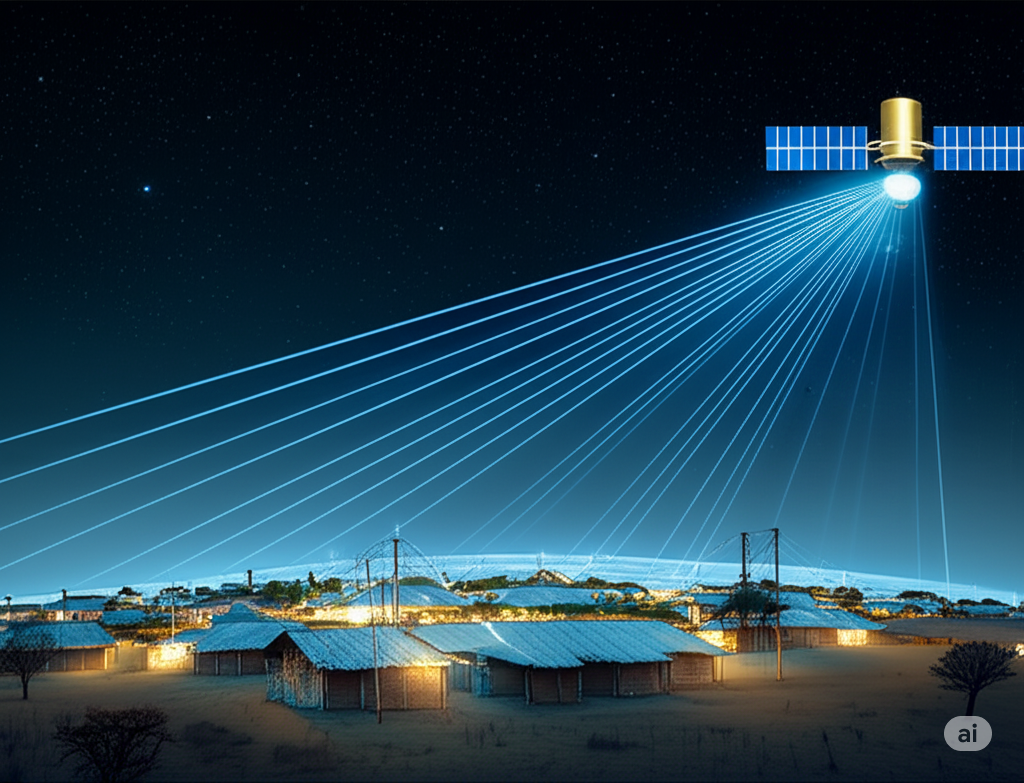Gist:
- Starlink has officially received approval to offer satellite-based internet services in India.
- This could significantly boost connectivity in rural and remote regions where optical fibre hasn’t reached.
- While Starlink provides accessibility, optical fibre remains superior in speed, latency, and cost-efficiency in urban contexts.
- A balanced, hybrid approach may provide the best internet coverage nationwide.
A New Dawn for Internet Connectivity in India
India, a country with 1.4 billion people, still struggles to provide reliable internet access in many parts of its vast geography. While urban areas enjoy high-speed fibre connectivity, millions in rural and remote regions remain digitally disconnected. That might soon change.
On receiving official approval from the Indian government, Elon Musk’s SpaceX has announced that Starlink will begin offering satellite-based internet services across the country. This groundbreaking development has triggered both excitement and skepticism. Can satellite internet truly bridge the digital divide? Or is it merely a supplementary solution to the more robust optical fibre networks?
In this blog, we’ll analyze how Starlink will impact internet accessibility, who benefits most, and how it stacks up against the well-established optical fibre infrastructure.
What is Starlink and How Does It Work?
Starlink is a satellite internet constellation developed by SpaceX. It consists of thousands of small satellites in low Earth orbit (LEO), working in coordination to deliver internet coverage to underserved areas around the world.
Key Features of Starlink:
- Operates from 550 km above Earth, reducing latency compared to traditional geostationary satellites.
- Requires only a satellite dish and router to connect.
- Portable and ideal for remote areas with little to no internet infrastructure.
Unlike traditional broadband that relies on ground infrastructure, Starlink beams signals directly from satellites, bypassing the need for fibre cables.
What Is Optical Fibre Internet?
Optical fibre internet uses cables made from thin strands of glass or plastic to transmit data as light signals. It is the current gold standard for high-speed internet.
Advantages of Fibre Internet:
- Extremely high bandwidth
- Very low latency
- High reliability in urban and suburban settings
However, deploying fibre networks is expensive and time-consuming, especially in mountainous, forested, or sparsely populated regions.
Starlink’s Entry into India: Why It Matters
India’s approval of Starlink signals a strategic push toward expanding internet coverage in places where telecom infrastructure is lacking.
Key Beneficiaries:
- Rural Communities: Where laying fibre is impractical or costly
- Border Areas: With limited connectivity options
- Disaster Zones: Where quick deployment of communications is vital
- Businesses in Remote Areas: Including mining, logistics, and agriculture
It aligns with the government’s Digital India initiative and could be transformative for sectors like education, telemedicine, and e-governance.
Comparing Speed and Performance: Starlink vs Fibre
| Feature | Starlink | Optical Fibre |
|---|---|---|
| Download Speed | 50-250 Mbps (average) | 100 Mbps – 1 Gbps+ |
| Upload Speed | 10-50 Mbps | 100 Mbps – 500 Mbps |
| Latency | ~20-40 ms | ~1-10 ms |
| Reliability | Weather-dependent | Highly stable |
Starlink provides reasonable speeds and latency for general browsing, streaming, and video conferencing. However, fibre still wins when it comes to performance consistency and ultra-low latency applications like gaming and real-time trading.
Cost and Accessibility: Who Can Afford It?
Starlink currently costs around INR 50,000-60,000 for the hardware, with a monthly fee of INR 7,000-10,000. While expensive for the average Indian household, it could be a cost-effective solution for remote schools, healthcare centers, or panchayats where no other options exist.
Fibre, once deployed, offers cheaper monthly plans (as low as INR 500) and more bandwidth. But initial deployment costs and time make it less viable in remote settings.
Environmental and Operational Considerations
Starlink:
- Generates space debris risks (thousands of satellites)
- Requires clear sky view and open area
- Susceptible to weather-related disruptions
Fibre:
- Requires ground-level digging and infrastructure
- Less affected by environmental conditions once deployed
Policy and Regulatory Implications
India’s telecom policies will need to evolve to accommodate LEO-based communication systems. Spectrum allocation, licensing norms, and cybersecurity standards must be clearly defined for satcom operators like Starlink.
Regulatory clarity will also determine how well Starlink integrates with existing telecom operators and whether its services remain commercially viable.
Urban vs Rural Use Cases: Who Wins Where?

Urban Areas:
- Fibre is dominant due to speed, cost-efficiency, and scalability
Rural/Remote Areas:
- Starlink holds the advantage where fibre deployment is logistically or economically unfeasible
A hybrid model where Starlink complements fibre could ensure more inclusive digital connectivity across India.
Challenges Ahead for Starlink in India
- High hardware and subscription costs
- Dependence on global satellite infrastructure
- Regulatory hurdles and domestic competition
- Public perception and awareness
Addressing these issues will be key to the long-term success of satellite internet in the country.
The Future of Internet in India: A Hybrid Ecosystem?
Rather than a battle between fibre and satellite, India may see a convergence of technologies.
Fibre will continue to expand in urban and semi-urban clusters, while Starlink and similar systems will cater to last-mile users, disaster relief, and mobility-based services.
5G and Wi-Fi 6 could further enhance the performance of both satellite and fibre by acting as intermediaries or endpoints for distribution.
Conclusion: A Satellite Boost to India’s Digital Dreams
Starlink’s licensing marks a pivotal moment in India’s digital journey. While it’s no silver bullet, its arrival adds a new, high-tech layer to India’s connectivity arsenal. For rural India, it could be the leapfrog moment needed to catch up with the digital economy. For urban users, it provides redundancy and mobility.
As policies evolve and technology matures, the real winners will be those who leverage both worlds — combining the reach of satellites with the speed of fibre to create an India that’s truly connected, everywhere.








+ There are no comments
Add yours